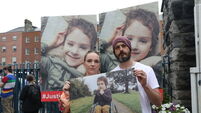Housing crisis: New York is showing us the way

The business of business is profit while the business of government is welfare, so why is it that for decades various administrations have relied so heavily on business to solve our housing crisis?
From the late 1980s up to 2008 public-private partnerships (PPPs) between local authorities and developers were the standard way of providing large-scale social housing but it was a catastrophic failure and we still have a crisis.
Why is it that we seem bereft of any ambitious and far-sighted way of tackling it?
Why is it that we fail to take on board or consider seriously methods that appear to be working elsewhere?
We could look to New York, a capitalist and business-friendly city that nevertheless has a long history of providing social housing and limiting the power of landlords to hike rents and evict tenants.
Last November the city’s mayor, Bill de Blasio unveiled his new roadmap for building and preserving 300,000 affordable homes by 2026 after surpassing the initial goal he set in 2014.
Under the “Housing New York” plan, the city has tripled the portion of affordable housing for households earning less than $25,000 (€20.800) a year and doubled funding for housing construction and preservation.
The key to the programme is the city authority’s PPP with non-profit housing groups and “mission driven organisations”. There is no question of relying on developers, speculators or builders motivated solely by profit.
The philosophy behind the programme is that safe, affordable housing stabilises communities and infuses families and individuals with hope for the future.
The opposite is also true. Unaffordable housing is a root cause of social inequality and, on a personal level, can bring huge frustration, upset and even mental health issues.
Consider this tale of two cities: professionals in Dublin have to spend 50% of their income on rent. In Vienna, it’s 20% and 25% of housing stock is social housing and a further 35% is limited-profit housing-association stock. Subsidised rents are funded by a land tax. Unused sites are taxed higher and there is strong protection of tenants’ rights.
Little wonder that in 2017 Austria’s capital ranked highest in the world for quality of living for the eighth year in a row. In Austria, housing is regarded as a human right.
TDs and activists gathered yesterday outside the offices of the Housing Agency to protest at the re-appointment of Conor Skehan as the agency’s chair in light of his comments about homelessness, describing it as a “normal thing” and claiming that some people are “gaming the system” by presenting as homeless in order to jump the social housing waiting list.
The protest was understandable as the agency, set up in 2010, has an important function in its advisory role and in liaising with local councils, central government, housing charities and providers.
Yet it is also a side issue and those involved in the protest would be better to concentrate their energies on finding solutions to a crisis that goes way beyond homelessness.















